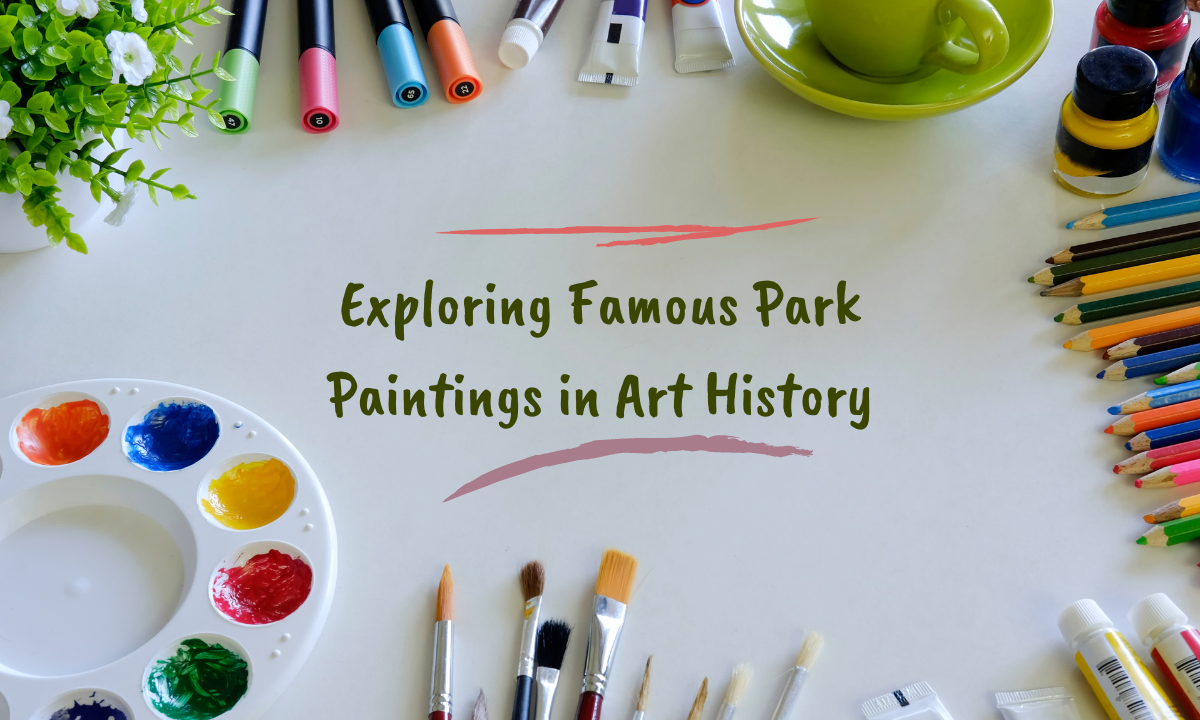Throughout the ages, parks have served as a source of inspiration for artists around the world, offering a unique blend of natural beauty and human presence. This article explores some of the most famous park paintings, revealing how artists have captured these communal spaces in their work.
The Evolution of Park Paintings
The journey into park paintings begins with the pastoral landscapes of the Renaissance, where artists started to incorporate elements of nature into their religious and mythological scenes. These early depictions laid the groundwork for later, more focused studies of park spaces.
By the 17th century, artists such as Claude Lorrain and Nicolas Poussin were creating idyllic landscapes that, while not always depicting actual parks, reflected the principles of balance and harmony that would influence the design of European parks and gardens for centuries to come.
The 18th century saw the rise of the English landscape garden, a style that emphasized natural beauty over formal structure. Paintings by artists like Thomas Gainsborough captured the essence of these spaces, blending natural and man-made elements in a way that mirrored the gardens themselves.
The Impact of Impressionism on Park Paintings
The 19th century brought a change in how parks were viewed, with public parks becoming more common. This era saw the rise of the Impressionists, who were particularly drawn to parks as subjects. Paintings like Édouard Manet’s “Music in the Tuileries Gardens” and Claude Monet’s series on the park Monceau capture the vibrancy of park life, focusing on light, color, and the fleeting moments of leisure activities.
Vincent van Gogh’s “A Park in Spring” is another example, where the artist’s unique use of color and brushstroke captures the rejuvenating energy of a park in bloom. His work emphasizes the emotional and psychological impact of these green spaces on individuals.
Parks in the Modern and Contemporary Art
The turn of the 20th century saw artists exploring parks in new ways, reflecting the changing urban landscapes. The Ashcan School, for instance, depicted New York City’s parks as spaces of refuge and social interaction, highlighting the contrast between natural and urban environments.
Modernist artists continued to explore this theme, with works like Marc Chagall’s “The Park” using color and form to convey a sense of whimsy and magic within an urban park setting. These paintings emphasized the park as a space for imagination and escape.
In contemporary times, artists like David Hockney have taken a more abstract approach to depicting parks, using technology and new media to reinterpret these spaces in innovative ways. Hockney’s “The Arrival of Spring in Woldgate, East Yorkshire” series showcases the dynamic beauty of nature through vivid colors and large-scale compositions.
For a deeper dive into the rich history of park paintings and to explore more works that have beautifully captured the essence of parks through the ages, click here. This link offers a gateway to understanding the significance of parks in art history and the various ways in which they have been represented.
The Enduring Importance of Parks in Art
Park paintings are more than just depictions of green spaces; they are reflections of society, culture, and the evolving relationship between humans and nature. From serene landscapes to bustling urban scenes, these works offer a window into the ways in which parks have served as places of leisure, refuge, and inspiration.
Furthermore, park paintings invite viewers to consider the importance of preserving these spaces for future generations. As cities grow and natural landscapes become more precious, these works of art remind us of the value of parks as vital components of urban life and human well-being.
Conclusion
In conclusion, park paintings hold a unique place in the world of art, offering diverse perspectives on a common theme. Through the eyes of artists across different periods and styles, we gain insight into the timeless appeal of parks as spaces of beauty, relaxation, and communal gathering. As we continue to navigate our relationship with the natural world, these paintings serve as a reminder of the enduring importance of parks in our lives.



